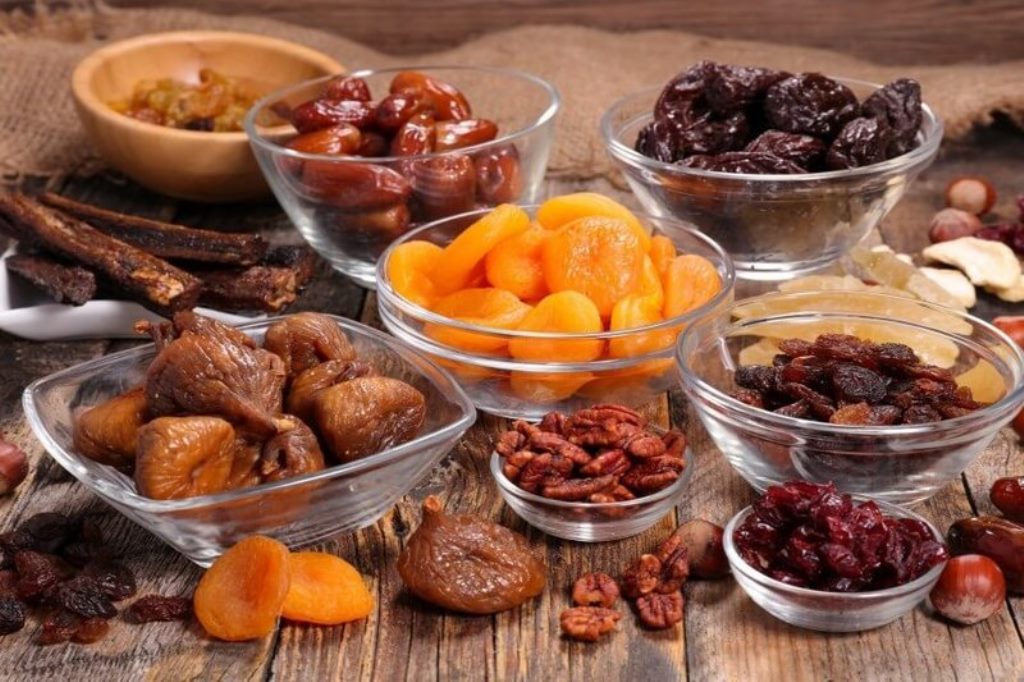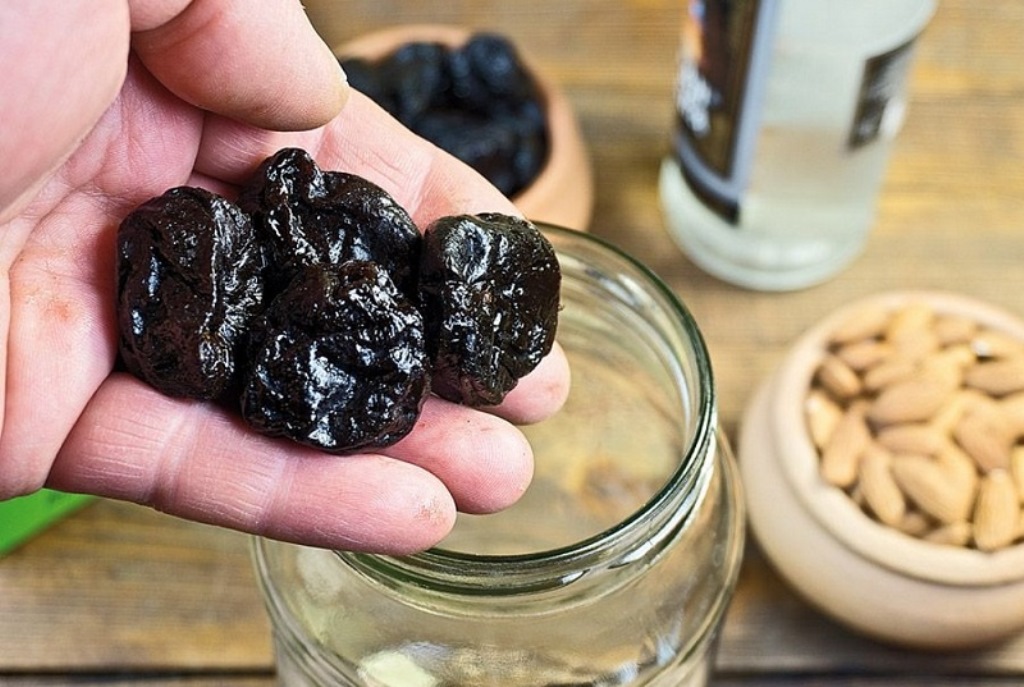How to store dried fruit properly
Dried naturally or with the help of a special device (dryer), dried fruits are especially desirable in winter, when the supply of your favorite fresh berries is running out. Their taste is radically different from the original, but by no means for the worse - it becomes more intense and unusual. To enjoy this delicacy all winter, dried fruit must be properly stored at home.

Why are dried fruits useful?
Dried fruits contain the same vitamins as their fresh equivalents, but at a higher concentration. First of all, they are rich in fiber, which stimulates metabolic processes and stabilizes digestion. Thanks to the abundant content of potassium, iron and carotene, the work of the heart, brain, and nervous system improves. Those who wish to cleanse the intestines and defeat the increased acidity of the stomach should definitely introduce dried fruits into their daily diet, and especially prunes.

Benefits of eating dried fruits:
- The possibility of having a snack without additional culinary treatment. Dried fruits do not need to be cooked, so they are great for a snack.
- Compatibility with other products - side dishes or even meat and fish dishes.
- The presence of simple sugars in the composition, which provide an influx of energy.
The only negative thing to keep in mind is the high calorie content. 100 g of dried fruit contains from 250 to 650 kcal. That is why they should be eaten with caution by those who are on a diet.

How to choose the right product
Only high-quality dried fruits are laid for storage, which must first be sorted out. To minimize waste, even at the purchase stage, you need to be guided by several simple rules:
- Refuse to buy a product that is too beautiful. Perfectly even, smooth and shiny dried fruits are best avoided - for sure, preservatives and chemicals have been used to preserve them. During the drying process, not a single fruit becomes more beautiful ... And that's okay.
- Do not choose moist dried fruits. This factor suggests that the fruit went on sale too early - they needed to lie down in the sun for some more time. Of course, you can buy them and dry them in the oven. But then all the beneficial properties will be lost.

How to save for the winter
To prevent dried fruits from spoiling in a few months, you need to choose the right packaging for them. The best option is classic glass jars with a tight sealed lid. In this form, dried fruits can be stored even at room temperature. If you plan to put them in the refrigerator, you can choose an ordinary plastic container as a container.The choice of containers must be approached individually, based on the temperature conditions in the house and the desired shelf life.

Storage preparation
You need to prepare dried fruits for storage in the following order:
- Inspect the dryer for damage, select only the best.
- Clamp a handful of dried fruit in your fist. If after that the palm remains wet, they need to be dried. This can be done in the oven at a temperature of no more than 80 degrees. It is necessary to keep drying there for about 1.5 hours, stirring occasionally.

Temperature and humidity
Optimal conditions are 10-15 degrees Celsius, 60% humidity and no direct sunlight. It is not advisable to combine several types of dried fruits together - they all have different moisture indicators. In addition, a product such as prunes has a strong odor that other dried fruits will also acquire.

What should be stored
The easiest storage method is with plastic bags. They are suitable if dried fruits are not planned to be stored for a long time - no more than a month. In other cases, you will have to look for an alternative:
- Glass jars. They are hermetically sealed, do not allow moisture and insects to penetrate inside. Thanks to the transparent texture, the condition of dried fruits can be tracked in time.
- Food containers. Similar to glass jars, they provide an airtight environment and can be refrigerated. The containers are more compact and capacious, so the choice often falls on them.
- Ceramic cookware with a tightening lid. These jars look very impressive and can be placed on open shelves in the kitchen (if the room is not too hot). You will have to supervise the drying periodically - open the container for fresh air, stir and sort it out.
- Cloth bags. This container is suitable for storing only dry products (apple drying, mango, pineapple pieces). You need to hang them in a room where moisture and dampness will definitely not get inside.
Shelf life
| Type of dried fruit | Shelf life, months |
| Prunes / prunes at a temperature of 0 ... 5 ° С | 6/12 |
| Dried apricots | 12 |
| Dates | 12 |
| Raisin | 6 |
| Fig | 6 |
Features of storage of different types of dried fruits
Drying is a delicate product, therefore, each type of it must be provided with suitable storage conditions. Dried fruits and berries can be arranged compactly, so they will not take up too much space in the refrigerator or on the pantry shelf. A prerequisite is that different types of dried fruits should not come into contact with each other. From this, the shelf life of dried fruits is significantly reduced.

How to store dried apricots
Well-dried dried apricots will not deteriorate up to 18 months at a relative humidity of no more than 70%. The storage options are varied:
- In the freezer. Wrapped in a plastic bag or film, dried apricots can lie there for 1.5-2 years. After defrosting, it will not lose its taste. It can be eaten raw or added to cereals, baked goods, etc.
- In a dry, dark place. A pantry or an attic without dampness and direct sunlight will keep dried apricots there for almost 1.5 years. The only condition is that dried fruits should not be raw.

It is important! It is strongly not recommended to store dried apricots near a gas stove or heating batteries. Under the influence of high temperatures, it quickly becomes moldy.
Raisin
Raisins are not only a tasty treat, but also a real storehouse of vitamins.You can store it for no more than six months, after having sorted it out and dried it in the open air.

Storage options:
- Linen bag. Tied with a string, it can be hung in the closet or on a dry balcony. Without sudden changes and with a stable air temperature up to +10 degrees, raisins can be stored for up to a year.
- Glass jar. It is not necessary to close it with a tight lid - it is enough to wrap the neck with a natural fabric and tie it with a thread. Shake the jar periodically so that the raisins are not compressed.
- Plastic container. If the room is too hot, you can put a container of raisins in the refrigerator. To prevent moisture from accumulating inside, it is advisable to lay out the container with white paper.
If, after long-term storage, the raisins have become dry, do not throw them away - just pour boiling water over them. Drying will steam out and become soft again, but it is no longer suitable for long-term storage. The rules for storing dried apricots and raisins at home are almost identical. That is why you can do the same with hardened dried apricots.

Dates
Usually dates are sold already packaged - in vacuum-sealed bags or cardboard boxes. For long-term storage, they can be placed in a refrigerator or a cool basement just in this form. Storage in polyethylene falls under a categorical prohibition - in it the dried fruit quickly "suffocates", mold appears. If the product is bought by weight and there is no desire to pack it in containers, you can do it easier: divide the dates into several portions, each of which should be wrapped in paper, and only then wrapped in a bag.

Fig
This dried fruit is the most capricious in terms of storage. After buying it, it is advisable to immediately sort it out, place it in glass containers and send it to the refrigerator. The thing is that even dried fig pulp has excess moisture. Under favorable conditions, mold quickly begins to develop inside. That is why stored figs need to be reviewed periodically.

Prunes
Well-dried prunes can be stored even at room temperature. If the purchased product is wet, it is better to dry it in direct sunlight for several days. In order to extend the shelf life of a dried fruit, you can go for a little trick - dip each fruit in a weak solution of soda or salt, and then dry it well. Before eating, such dried fruits must be thoroughly rinsed. Preservation with salt and soda will not affect the taste, but it will save the product from mold and insect damage.

Dried apples
Like any other dried fruit, apples should be stored at home at a temperature not exceeding +10 degrees. For these purposes, wooden and cardboard boxes, bags made of dense fabric are perfect. In the immediate vicinity of dried apples, there should be no other products with pungent odors, because they instantly take on all these aromas.

In addition, very often the housewives make apple drying themselves. At home, in contrast to production, it can be very difficult to track the readiness of dried fruits. From that and the problem - the appearance of bugs and mold. If the apples have been dried in the sun, they should be dried a little in the oven before storing them for long-term storage.
Storing a mix of dried fruits
It is categorically not recommended to place different types of dried fruits in one container and store them at room temperature - different humidity can provoke the appearance of mold, the development of putrefactive processes. In addition, products with stronger odors will dominate and gradually transfer their aroma to others.
If the mix has already been purchased, it is best to place it in the refrigerator. For long-term storage, a freezer is perfect. If you focus on how you can properly store dried fruits at home, then each subspecies should be separated and wrapped in paper. If there is no way to separate them, then it is worth expanding the mix at least in portions.
Can I keep frozen
Most dried fruits do not lose their original flavor after thawing. But you need to be careful with some of them: apples and dates almost always turn into porridge, which can only be used for processing. To preserve their texture, add them to the dough or dishes you need to defrost a little.

Dried fruits are a very healthy product that can be eaten all year round. To make them "live" as long as possible, you need to ensure the correct storage conditions: temperature - up to +10 degrees Celsius, and humidity - up to 70%. As a last resort, they can be stored in the freezer. Each housewife decides for herself what to store dried fruits, but containers made of natural materials - wood, fabric or glass - are best suited for these purposes.

Video: how to store dried fruits at home













